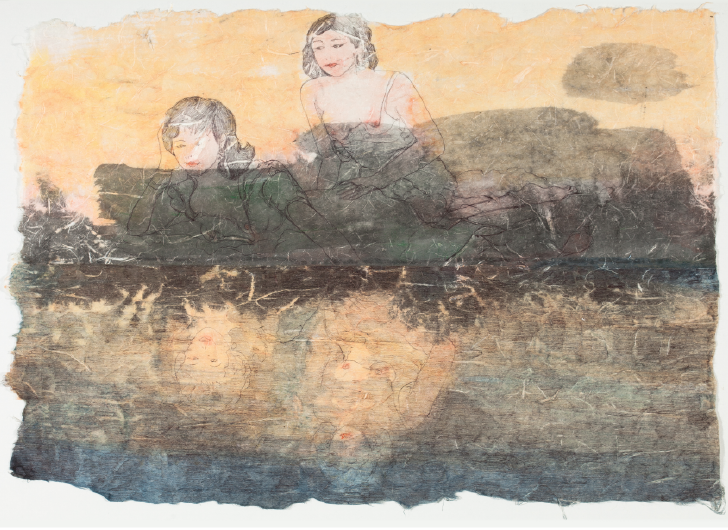
Xiang Mei香妹 (fragrant sisters) I–III is derived from found objects - three Chinese art deco beauty advertisements (commonly referred to as ’Shanghai girls’), typical of 1920s and 30s Shanghai. I purchased the three posters (ea 25 x 38 cm) for CNY ¥20 (ea) from a street seller in Gulou Dongdajie, Beijing, in July 2011.
They caught my eye due to their distinct yet ambiguous play with (female) sexuality. Later, I copied them onto Chinese paper (ea 30 x 40 cm), merging the female figures with natural landscapes. The original ads underwent a transformation by being transferred to a different context. This approach is strongly influenced by my current research on ornamentation and its evolution into abstraction – i.e. romantic landscape imagery or emptiness.
In 2011, I was a resident artist in Caochangdi. Hence, I am familiar with the site for my spatial installation, the underpass, which I passed through every day on my daily jogs to Wangjing Park.
To catch the eye of (taxi) drivers, cyclists, pedestrians, ‘laobaixing’ (ordinary people) and art lovers passing by on their way to and from the city, I decided to adopt the traditional form of the ‘dazibao’ (大字报) – ‘big-character poster’. Subsequently, the completed works were enlarged to 230 x 300 cm (ea) and applied to the concrete walls.
This work is cyclical. Three small prints prompted me to start drawing. Then the prints and drawings were printed in billboardsize and used for their original purpose – as public advertisements. Another interpretation would be that found objects, taken from a street stall and their original context, were transformed into rather private and stylised drawings, before being returned to a public stage in the form of an interactive installation.
This signifies how high and low culture are mutually dependent, reflecting the dynamic relations between microcosm and macrocosm and how I, via visual language, can playfully interact with a culture that is not mine.